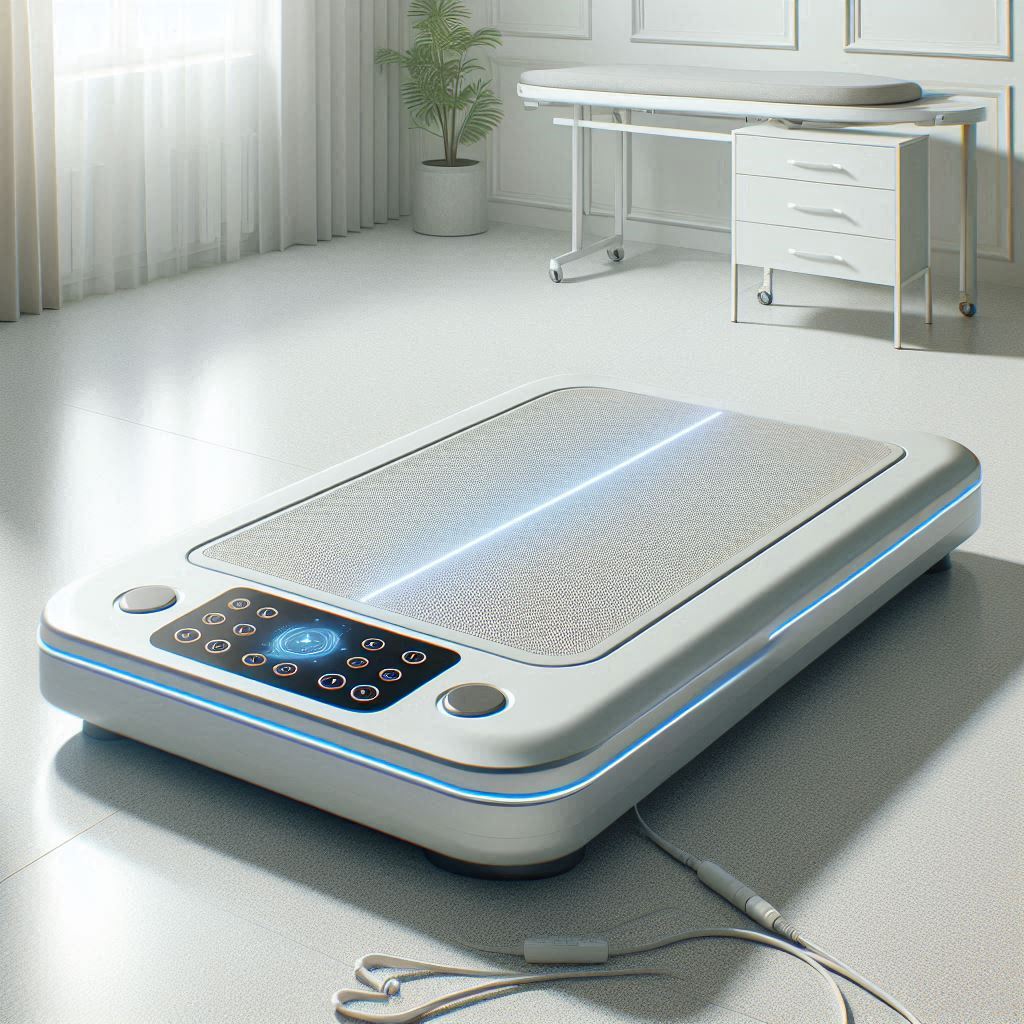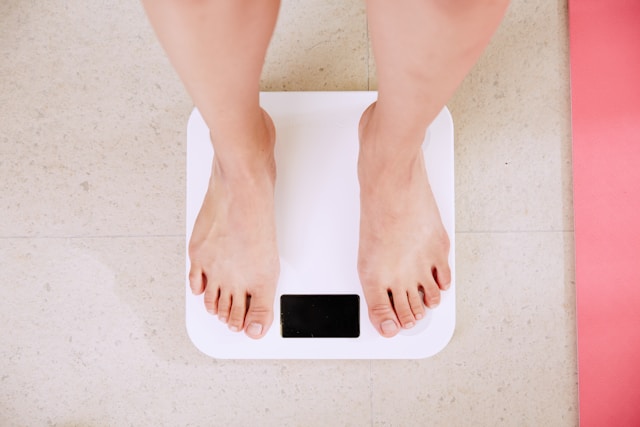Whole Body Vibration Therapy

Whole body vibration therapy has been a popular treatment touted for weight loss, muscle strength and bone health. However, it’s worth looking past the hype and seeing what type of benefits have actually been documented with vibration therapy.
As a therapy, whole body vibration is applied through a vibration plate that you can stand, sit or do exercises on. Different types of plates produce different types of vibrations that are supposed to challenge your muscles to maintain balance. The frequency of the vibrations and the intensity can typically be adjusted. As the muscles repeatedly engage from the vibrations, muscle strength can be maintained or improved.
Potential benefits from whole body vibration therapy include:
- Improved muscle strength
- Decreased pain
- Improved circulation and lymphatic drainage
- Increased bone density
- Weight loss
Improved Muscle Strength
As we age we often lose muscle mass. Exercise can help to arrest the loss, but many people do not exercise enough to maintain adequate muscle. In subjects over 80 years old, a meta-analysis found that whole body vibration was able to improve overall strength, mobility, walking ability, balance and physical performance. Most of the improvements were considered to be moderate to large in the amount of improvement (Sañudo 2024). The benefits were achieved with exercising on the vibration plate for two or three times per week.
A separate meta-analysis on lower limb strength and physical performance in patients over age 65 also documented benefits. Knee strength, explosive power, improved sitting to standing and balance all showed improvements (Tan 2023).
Other meta-analyses have found benefits for muscle strength and function for stroke recovery, cerebral palsy in children, in obese patients and in chronic obstructive pulmonary disease (Yang 2023, Cai 2023, Rubio-Arias 2021, Cardim 2016). However, results for multiple sclerosis only showed limited benefits for knee strength and did not improve functional mobility (Kang 2016).
Decreased Pain
Osteoarthritis is considered to be caused by long-term wear and tear on the joints of the body. In a meta-analysis, whole body vibration was found to positively influence knee osteoarthritis (Qiu 2022). Pain was reduced, strength increased and physical function was improved. For chronic musculoskeletal pain, whole body vibration was also found to be helpful (Dong 2019). It appeared to help osteoarthritis-induced pain conditions in general.
Low back pain is one of the most common causes of physical disability. A meta-analysis of the research found that whole body vibration therapy can improve pain and improve function for individuals with chronic low back pain, although the studies were considered to be of poor quality (Li 2023).
While studies of fibromyalgia exist, they are of very low quality and did not assess many standard parameters around pain levels and function (Bidonde 2017). Assessing the benefits of vibration therapy on fibromyalgia is difficult with the current evidence. One study did find short-term improvements in inflammatory status for fibromyalgia patients with whole body vibration, however, the long-term effects were not evaluated (Ribeiro 2018).
Improved Circulation and Lymphatic Drainage
Circulation
While some of the studies on blood flow and circulation have been contradictory, a review of the research overall found that consistent benefits appear to be associated with lower vibration frequencies (Mahbub 2019). In studies using whole body vibration up to 30 hertz, blood flow or skin temperature improved in the lower extremities, indicating improved circulation. However, in studies with vibration frequencies above 30 hertz, circulatory improvements were not always consistent.
Also worthy of note was that vibration plates that just vibrate up and down were less effective than plates that vibrate in a seesaw motion, also referred to as “pivotal.” The study found that when the vibration intensity is too high, circulation may actually be decreased. Interestingly, the study delved heavily into safety parameters of vibration and mentions that most studies were conducted at vibration thresholds that may not be safe for long term use as they exceed European safety standards.
Edema
Edema is the buildup of fluid, often in the feet and ankles, that can cause swelling and discomfort. A small study preprint explored vibration therapy in chair-bound individuals over age 65 with ankle edema. Vibration therapy was compared to controls who didn’t receive vibration treatment (Tsuchiya 2020). After two weeks of treatment, 64% of the patients had control of their edema with vibration therapy as compared to 21% without.
Lymphatic Drainage
Breast cancer treatment can cause problems with lymphatic flow in the arm leading to a condition called lymphedema. Lymphedema involves the build up of fluid that can cause discomfort, distress, mobility problems and an increased risk for infection. Treatment involves lifelong techniques to help drain the fluid through the tissues through massage or physical therapy.
A small study explored standard lymph drainage by itself or combined with vibration therapy (Dai 2012). While the plate used for vibrating the arms was smaller than standard plates, the treatment parameters were still similar to standard, larger vibration plates. All of the women in the vibration treatment had reductions in arm volume, indicating improvement, while 30% of women in the control group worsened with standard treatment.
Increased Bone Density
Osteoporosis is a common condition related to aging. The condition is caused by increased bone loss that, over time, can weaken bones leading to an increased fracture risk. Weight bearing exercise is one of the mainstay treatment recommendations for improving bone strength by stimulating bone growth. As such, studies have explored the use of whole body vibration therapy for the treatment of bone loss.
A meta-analysis from 2023 found that whole body vibration therapy can improve bone density (de Oliveira 2023). However, the best results were found with low intensity vibrations at frequencies around 30 hertz. Benefits also took time, with around 120 hours of exposure needed to start showing improvements in the lumbar spine. While other vibration therapy protocols may still be of benefit, the evidence was weaker or of lower quality.
Weight Loss

Probably one of the most touted benefits of whole body vibration therapy is for weight loss. Published studies have focused primarily on loss of body fat. A meta-analysis from 2021 found that the average reduction in body fat from whole body vibration therapy was 2.5% (Alavinia 2021).
Types of Vibration
Probably the biggest problem with the research on whole body vibration therapy is the lack of standardization in reporting parameters. Different vibration plates produce different types of vibration, including up-and-down, side-to-side and see-saw-type vibrations. Intensity and acceleration speed of the vibrations are not always well described.
It appears that for some applications, up-and-down vibrations are not as effective as see-saw-type vibrations, particularly for circulation issues. More research is needed on the specific vibration types to better understand their best application.
Safety and Whole Body Vibration Therapy
While the studies appear to indicate that vibration therapy is safe with minimal side effects, caution is certainly advised. Research has previously shown that whole body vibration exposure from driving large vehicles for work, over time, can cause low back pain and sciatica (Burström.2015). The research is interesting, but difficult to interpret as sitting for long periods, exposure to diesel exhaust and other factors may also be related to driving vehicles and could confound the results.
Still, the available vibration plates often produce vibration intensities well above what are considered safe vibration thresholds under European guidelines. Yet most benefits do not appear to require these high vibrational intensities. For individuals using vibration plates, it’s likely that they can reap the benefits using lower intensity settings while improving long-term safety. Before starting whole body vibration therapy, anyone with a significant or serious health condition should check to see if the use of a vibration plate is contraindicated.
Conclusion
Compared to many other topics I’ve written about, the amount of research available on whole body vibration therapy is impressive. The benefits appear to be quite significant for numerous conditions with minimal risks—when vibration therapy is utilized properly. For a number of different health applications, like improving strength, building bone, decreasing pain and improving circulation, whole body therapy could be a welcome addition to treatment.



